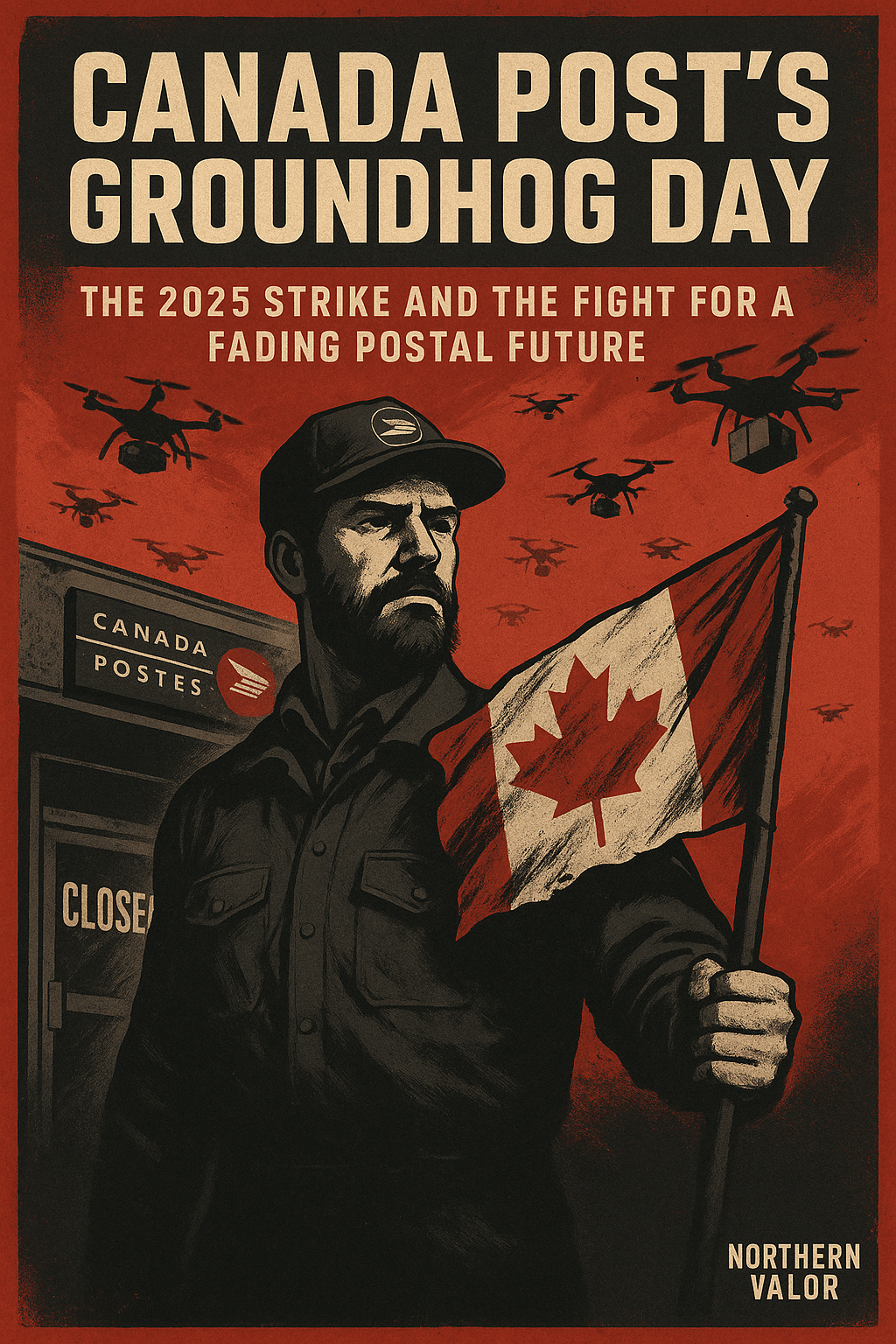
Canada Post’s Groundhog Day: The 2025 Strike and the Fight for a Fading Postal Future
Share
Across the frostbitten towns and cities of Canada, the red mailboxes stand like hollow monuments. Once symbols of connection, now reminders of a system frozen in its own bureaucracy. As of October 9, 2025, Canada Post has ground to a halt again—55,000 postal workers walking off the job, leaving a nation staring into the same tired loop of strikes, government band-aids, and economic fallout.
This isn’t just a union fight. It’s the death rattle of a Crown corporation that never adapted to the digital age. Canada Post is trying to survive in a world where people send TikToks, not letters—where Amazon drivers move faster than policy. The question hanging in the crisp October air isn’t “when will the mail resume?” but rather, “does Canada Post even have a future to deliver?”
The Strike That Broke the System
It started, as these things often do, with promises and politics. After last year’s 32-day strike, Ottawa forced a temporary truce—contracts extended, grievances shelved. But reform came knocking again in 2025, when the government greenlit an “efficiency overhaul”: cut door-to-door delivery, close rural offices, and replace human contact with community mailboxes.
To the Canadian Union of Postal Workers (CUPW), that wasn’t reform. It was an obituary. They called it “an attack on our postal service and our people.” Within hours, the trucks were parked, the sorting lines were dark, and the nation’s mail went silent.
Money Lost, Trust Shattered
Canada Post hasn’t been profitable since 2017. Seven years of red ink and billions burned trying to stay relevant while digital communication gutted letter volumes. 2024’s losses hit $1.3 billion. By mid-2025, they’d already bled another $400 million.
Every day the strike continues costs about $10 million. The irony? The company’s reform plan is supposed to save $1 billion by 2028—but those “savings” come from job cuts, service reductions, and selling off pieces of the very system it was meant to protect.
And while executives crunch spreadsheets, small businesses suffer. E-commerce sellers who depend on low-cost shipping are crushed. Last year, 10 million undelivered packages stranded during the holiday rush. This year’s déjà vu means another Black Friday massacre.
Rural Canada: The First Casualty
For urban Canadians, a strike is an inconvenience. For rural ones, it’s a crisis. In towns like Fort Simpson, N.W.T., or northern Ontario reserves, mail isn’t just mail—it’s medication, income, supplies, and sometimes a connection to the outside world.
Cutting those lifelines isn’t modernization. It’s abandonment. CUPW’s proposed solution—turn post offices into community hubs with banking and broadband—was ignored. The government calls it “unfeasible.” Translation: unprofitable.
The Bigger Picture: A Nation Losing Faith
Polls show Canadians split three ways: one-third with the union, one-third with management, and the rest just tired. Social media is boiling with frustration—delayed prescriptions, ruined online businesses, and memes calling it “Cancelling Christmas: Part II.”
The deeper truth? Canada Post has become a mirror of our national identity crisis. Once a symbol of public trust and service, now a relic of inefficiency and entitlement. CUPW fights for dignity; management fights for survival. Both are trapped in a system too bloated to evolve, too bureaucratic to die.
What Comes Next
There’s only one path forward: reinvention. Not by gutting workers, but by reimagining what public service means in the digital era. Imagine postal hubs offering banking, charging stations, digital access points—self-sustaining community infrastructure rather than corporate fossils.
The alternative is bleak: privatization, gig work, and the slow death of one of Canada’s last nationwide public institutions.
For now, the picket lines stretch across the nation like battlefronts of an old war that no one really wins. The executives hunker down, the government hesitates, and the people wait—watching a once-great symbol of unity crumble under its own weight.
Maybe one day the mail will run again. But whether Canada Post still stands as a public service by then—that’s a letter that may never be delivered.
